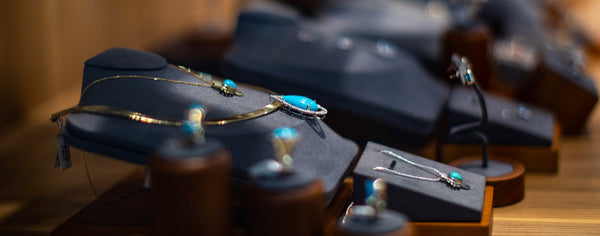Diamond rings have a fascinating history, transforming from simple symbols of ownership in ancient Rome to cherished tokens of love. The first diamond engagement ring was presented by Archduke Maximilian in 1477, marking a significant moment in this tradition. Over the centuries, particularly during the Victorian era, these rings became more intricate, often featuring personal details and sentimental meanings. The 20th century saw a surge in popularity, highlighted by De Beers' impactful marketing campaign, "A Diamond is Forever." Today, diamond rings remain essential in expressions of commitment, reflecting both cultural significance and personal style.
Origins of Engagement Rings
Engagement rings date back to ancient Rome, where they symbolized ownership and commitment. Initially, these rings were crafted from materials like ivory and iron, representing a bond that was both personal and binding.

As time passed, we see a significant shift in the meaning and materials of engagement rings. The first recorded diamond engagement ring was given in 1477 by Archduke Maximilian of Austria to Mary of Burgundy. This beautiful gesture sparked a trend among European aristocracy, marking diamonds as a new symbol of love.
During the Middle Ages, engagement rings evolved further with posy rings, which featured inscribed love poetry, becoming popular tokens of affection. By the late 19th century, the influence of marketing campaigns, especially by De Beers, played a vital role in popularizing diamond engagement rings. Their famous slogan, "A Diamond is Forever," solidified the diamond's status as a symbol of eternal love, intertwining romance with commitment. Today, when we exchange engagement rings, we're continuing a deep-rooted tradition that represents our love and devotion to one another.
The Victorian Era
In the Victorian Era, we saw a remarkable transformation in the design of diamond rings, where intricate details became a hallmark of style. Rings often combined diamonds with colorful gemstones, showcasing the rich creativity of the time and the personal meanings behind each piece.
Elegance defined the intricate design features of diamond rings during the Victorian era, where ornate craftsmanship became a hallmark of personal expression. We can see how the period marked a significant shift towards elaborate and intricate designs, showcasing the unique tastes of couples celebrating their love. Posey rings stood out, often adorned with floral patterns and engravings of love poetry, symbolizing deep emotional connections.
Filigree settings emerged as a hallmark of Edwardian diamond rings, revealing delicate metalwork that added elegance and sophistication. This fine craftsmanship allowed the diamonds to shine even brighter, enchanting the hearts of those who beheld them. In the Victorian era, diamond rings truly became more than mere jewelry; they transformed into treasured symbols of love and commitment.
The Rise of Diamonds
De Beers' campaign transformed their image into a symbol of everlasting love. With cultural shifts and a booming post-war economy, more couples began to see diamonds as essential for expressing commitment. By the 1960s, diamonds had become the go-to choice for engagement rings, largely thanks to both effective marketing and Hollywood's influence.

In 1947, De Beers launched its iconic marketing campaign with the slogan "A Diamond is Forever." This clever phrase connected diamonds to the idea of eternal love, making them highly desirable as engagement rings. As a result of this campaign, diamonds have become essential symbols of love, transforming consumer preferences dramatically. This campaign sparked a cultural shift, leading to about 80% of engagement rings sold in the U.S. by the 1960s featuring diamonds.
Advancements in mining technology, particularly in South Africa during the late 19th century, made diamonds much more accessible, allowing many couples to embrace this beautiful symbol of commitment.
Post-War Popularity Surge
Following the cultural transformation brought on by the symbolism of diamonds, post-World War II marked a significant surge in their popularity. As soldiers returned home, many sought to solidify their commitments with engagement rings, and diamonds quickly became the preferred choice.
The post-war economic boom made diamonds more accessible, as advancements in mining and distribution allowed couples to purchase these beautiful gems at more affordable prices.
Modern Design Trends
What makes a modern engagement ring truly unique? Today, we're seeing exciting modern design trends that allow couples to express their individuality. Customization has become essential; many of us seek personalized designs that tell our unique stories. Instead of traditional diamonds, alternative gemstones like sapphires and emeralds are gaining popularity, offering vibrant, distinctive looks that reflect personal style.

We also notice a strong return to vintage styles, where intricate designs and historical significance attract many buyers. These rings often evoke a sense of nostalgia and connection to the past, making them even more special. Additionally, as we become more environmentally conscious, the demand for ethically sourced materials is rising. Couples are increasingly choosing lab-grown diamonds and conflict-free stones, ensuring their love story begins with a commitment to sustainability.
Social media platforms, especially Instagram, play a significant role in shaping these trends. They showcase diverse styles, inspiring couples to explore unique options that resonate with them. This combination of personal touch, ethical choices, and creative inspiration makes modern engagement rings a true reflection of our values and desires.
Economic Impact
The economic impact of diamond engagement rings is substantial, influencing various sectors from mining to retail. When we think about our journey towards commitment, it's crucial to recognize that the engagement ring market greatly contributes to global jewelry sales. In the U.S. alone, couples spend an average of around $5,500 on these cherished rings, highlighting their role in the economy. This spending not only reflects our personal milestones but also supports thousands of jobs across industries like mining, craftsmanship, and retail.
As we explore this market, we see it growing at an annual rate of 3-4%, indicating a steady demand for diamond engagement rings and luxurious items. Additionally, high-quality diamonds are often viewed as smart investments, appreciating in value over time. This dual role as both a symbol of love and a financial asset adds to the economic significance of these beautiful rings.
In essence, every engagement ring purchase we make helps sustain jobs and keep the diamond market thriving, intertwining our personal lives with broader economic trends.
Conclusion
The history of diamond rings reveals their deep cultural roots and evolving significance over time. From the origins of engagement rings to the modern design trends we see today, each period has shaped our understanding of these symbols of love. As we choose diamond rings, we not only participate in a rich tradition but also consider the social and economic impacts they carry.













